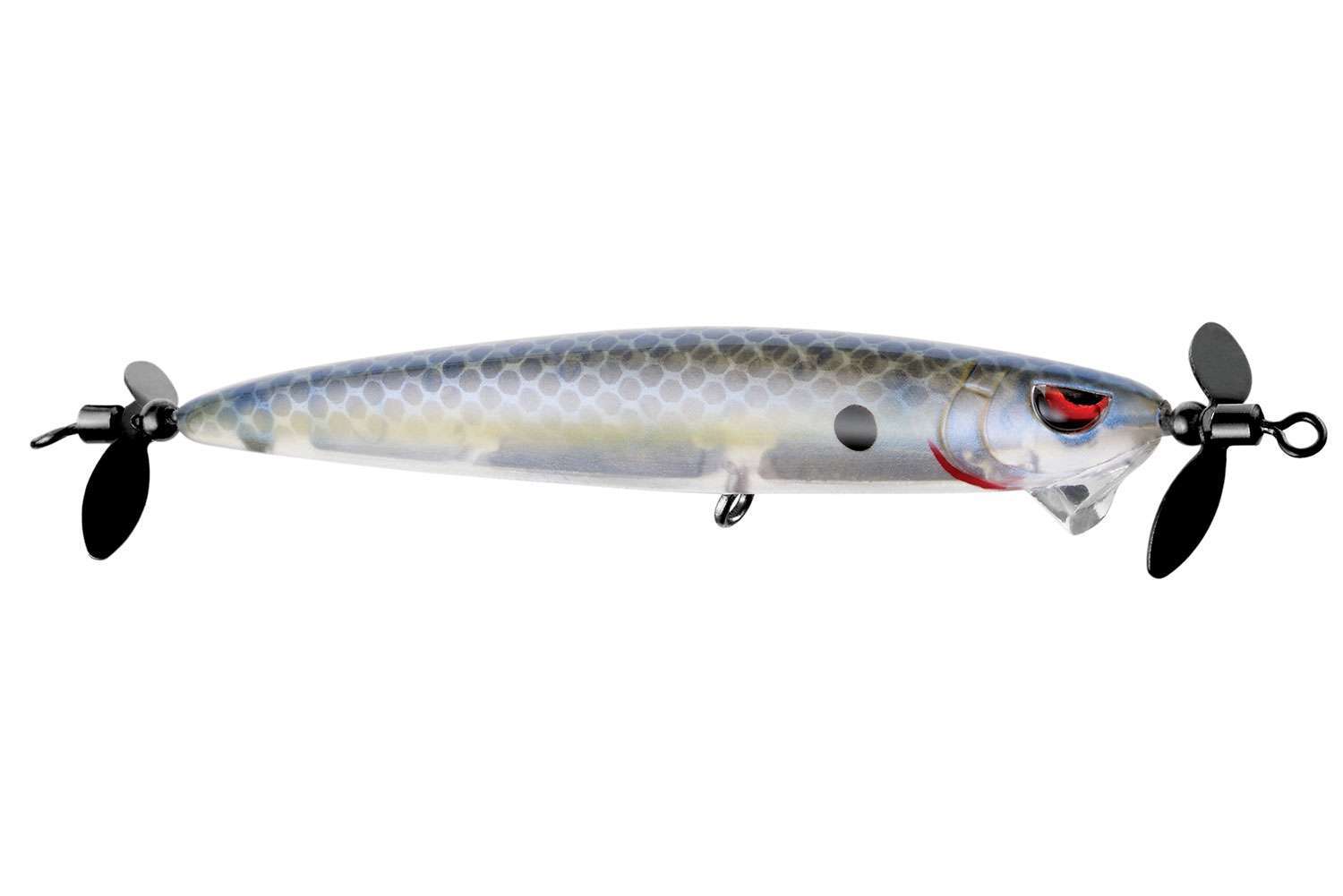
The generic name for this lure is a spinbait. Many anglers call it a spybait. Either way, it’s a popular technique gaining momentum all across the country. Yet, a lot of people don’t know how to fish it. I didn’t realize that until I started designing the SPRO Spin John 80 that we officially released at this year’s ICAST show.
To give credit where it is due, Duo Realis is the company that put this technique on the map in the United States. I don’t know if they made the first one or not. There are a number of models on the market in Japan where it originated. Regardless, the Duo Realis model is the most popular here.
And, there’s a good reason for that. It had the best action of all the ones I tried before I designed my own.
The whole deal with one of these baits is that it rocks from side to side as it sinks and when it’s retrieved slowly. This unique action happens at the same time the blades on the front and the back are spinning.
But don’t be fooled. The blades don’t create that movement. You can take the blades off and the bait will still rock. All the blades do is create and accent the flash and vibration while they work to slow the bait’s horizontal movement so that it rocks better.
The 80 mm size works best on lighter line, the lighter the better. I usually fish it on a 6-pound-test Sunline FC Sniper leader for openers, but I do go up to 7-pound-test on occasion. Anything heavier than that starts to inhibit the rocking action. Some die-hards go as light as 4-pound-test but I can’t do that in a tournament setting.
The reason I’m mentioning line size first when I’m talking about how to fish a spinbait is that the action is what it’s all about with a spinbait. It’s a clear water lure. Any problems with the action will kill the bite.
After several years of fishing these baits, I’ve refined my tackle. This is what I use, and why:
My rod is a 7 foot, 6-inch medium action Cashion Elite spinning rod. The longer rod helps a bunch in getting a solid hookset and when fighting the fish back to the boat. My leader length is 20-22 feet long. It’s tied to 12-pound-test Sunline Xplasma Asegai braid. The braid really helps you get a good hookset with the long casts you have to make.
I spool my line on a Daiwa Tatula LT 3000 size spinning reel. My leader is tied to my main line with a FG Knot. I made a good YouTube video showing everyone exactly how to tie this knot because it is not easy and a lot of anglers don’t know about it. However, it is by far the best one.
Once your tackle is in order it’s time to make a few casts. One presentation is to simply make a cast and reel your lure back — slowly — towards the boat. The bait will drop like a pendulum on the way back. You can also let it sink partway down before you start your retrieve. This will get it down deeper in the water column.
A third choice is to let it sink all the way to the bottom. You can reel it slow enough to keep it close to the bottom or you can yo-yo it. I usually reel mine up, off the bottom at a medium pace and then let it rock back and forth as it falls down.
I’ve fished spinbaits all three ways, and I’ve caught fish all three ways. It’s a versatile lure. That’s what’s so cool about it.
After fishing the other spinbaits on the market, you can see why I wanted to design one. I want more anglers to be able to enjoy the technique. I tried not to reinvent the wheel, but with this lure, I thought we could do better based on the way I was modifying other spinbaits.
We started by putting a swivel on the front and back of our lures. The front swivel helps with line twist and the back swivel helps with hooksets by moving the hook away from the blade.
We also put a “chin” on the bait to push more water over it. This makes it rock back and forth better. I actually made this chin out of plumber’s putty on the prototype.
Last but not least, we matched our blades to the color pattern of the body for a more custom look, and we added a tiny feather to the back hook. I did that with other spinbaits, and it seemed like I got more bites.
When to fish a Spin John 80 is an open question. I’ve used it successfully on various lakes at various times of the year. I have seen spybaits excel in the late spring and late summer. About all I can say is to give it a try and see what happens.
I’ll never say you need every new thing that comes out on the market. But if you like fishing with light line, a spinbait is one you should add to your arsenal. It’ll make a big difference in how many bass you catch.





